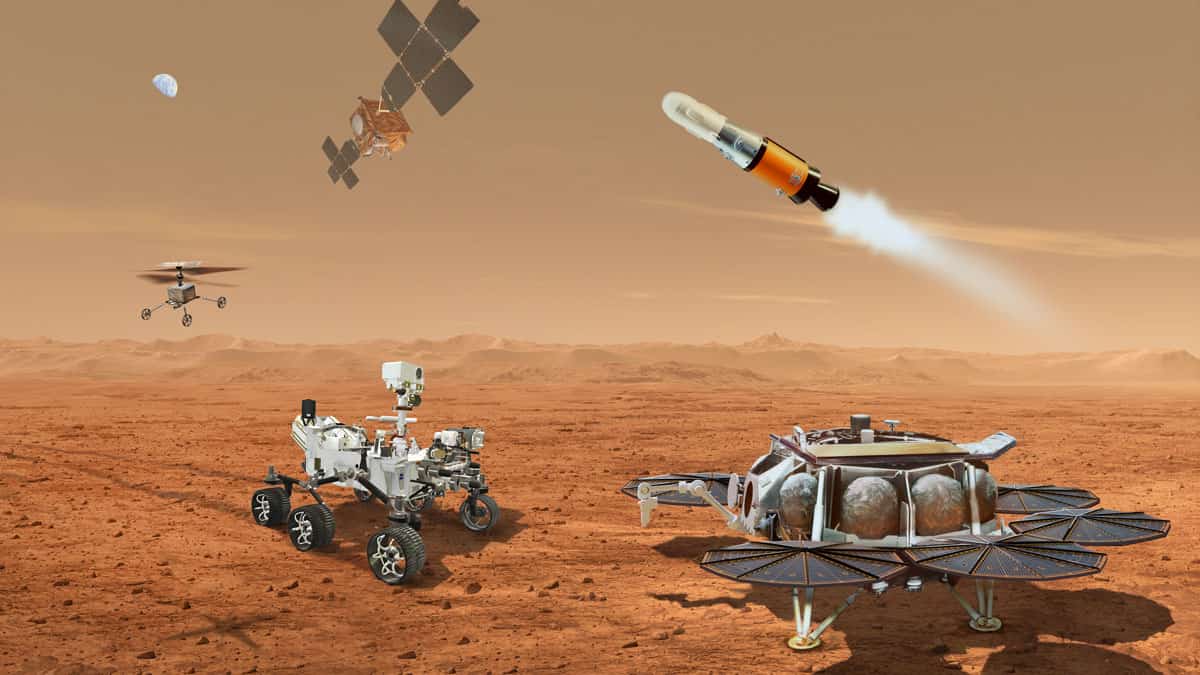
NASA’s Mars Sample Return (MSR) program has been hit with a potentially hefty price tag increase, causing concerns among scientists about its impact on other missions. The space agency confirmed that one estimate for the full cost of MSR ranges between $8 billion to $9 billion, significantly higher than previous estimates. This comes after an independent review in 2020 projected the cost to be between $3.8 billion and $4.4 billion.
Bloated cost — but NASA is still committed to plow through
The agency emphasized that the range of funding scenarios evaluated for its missions during the annual budget process includes highly speculative projections. The $8-9 billion estimate includes launch, operation, and closeout cost estimates. To provide an official cost and schedule baseline, NASA plans to conduct a formal confirmation review for the program in the fall, following preliminary design reviews and an independent board review led by Orlando Figueroa, a former director of NASA’s Mars Exploration Program.
“NASA evaluates a wide range of funding scenarios every year for its portfolio of missions as part of its annual budget process,” the agency told SpaceNews. “Missions in formulation, such as Mars Sample Return, have more variables to consider, providing for a greater range of scenarios to evaluate — all scenarios are highly speculative.”
Jeff Gramling, the MSR program director, highlighted the agency’s deliberate approach to confirmation, stating the importance of scrutinizing technical plans, associated costs, and schedules before proceeding. Gramling acknowledged that convening a second independent review before confirmation is unprecedented, underscoring NASA’s commitment to keeping the MSR program on track.
“We’re taking a very deliberate approach to confirmation. We’re trying to go back and make sure that we’ve put scrutiny on all of our technical plans and we’ve gotten scrutiny on the associated cost and schedule,” said Gramling in a June 7 presentation at a meeting of the National Academies’ Space Studies Board and Aeronautics and Space Engineering Board.
Prior to the recent estimate, there were indications of cost growth for MSR. The fiscal year 2024 budget request sought $949.3 million for MSR and hinted at expected cost increases beyond the projected out-year profile. Consequently, NASA’s budget proposal paused work on a heliophysics mission, the Geospace Dynamics Constellation, due to the high budgetary requirements of other missions like MSR.
NASA Administrator Bill Nelson, testifying before Senate appropriators in April, mentioned a possible additional $250 million needed for MSR in the current fiscal year and in 2024. However, NASA officials have refrained from confirming this budget increase.
The rising costs of MSR were also a topic of concern at a recent meeting of NASA’s Planetary Science Advisory Committee (PAC), a group of scientists advising the agency on planetary science initiatives. While exact figures were not discussed, members expressed apprehension about the effects of cost growth on the overall portfolio of missions.
Lori Glaze, director of NASA’s planetary science division, assured the PAC that existing policies and processes were in place to address potential cost growth after the confirmation review. However, the options may be limited to accepting the cost increase or canceling MSR altogether.
“There are not really any significant descopes available to us here,” Gramling said at the National Academies meeting. He then stated that one option would be to take away one of the two helicopters that would pick up cached samples if Perseverance couldn’t bring samples straight to the Sample Retrieval Lander.
The latest planetary science decadal survey identified MSR as a top priority among large missions but recommended keeping its cost to no more than 35 percent of the overall planetary science budget in any fiscal year.
According to the report, NASA shouldn’t divert funds from other planetary initiatives to cover the sample-return mission’s costs if they rose significantly (defined as 20 percent or more) or exceeded 35 percent of the agency’s planetary scientific budget in any given year. Instead, the organization should seek Congress for a “budget augmentation.”
Despite the challenges posed by the increased cost estimate, NASA states the importance of MSR in advancing our understanding of Mars and its potential for past life remains a top priority.
“Mars Sample Return is of fundamental strategic importance to NASA, U.S. leadership in planetary science, and international cooperation and should be completed as rapidly as possible,” the report stated. “However, its cost should not be allowed to undermine the long-term programmatic balance of the planetary portfolio.”









